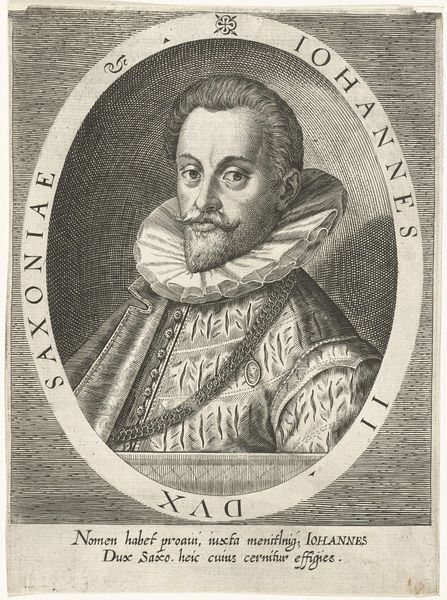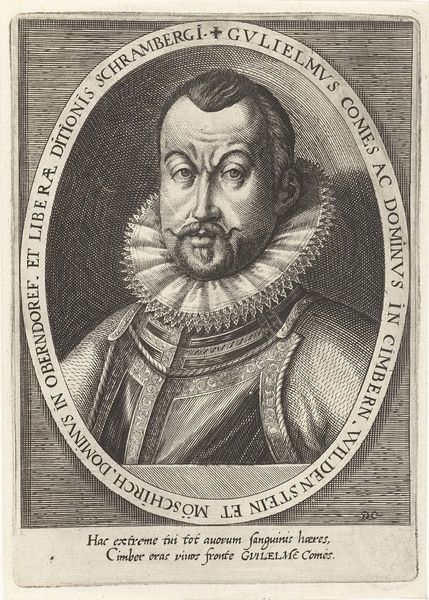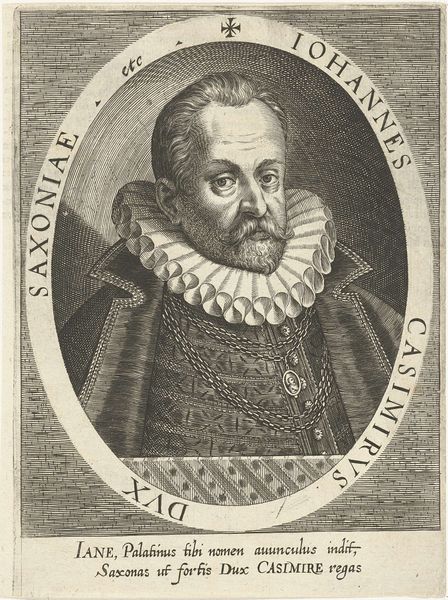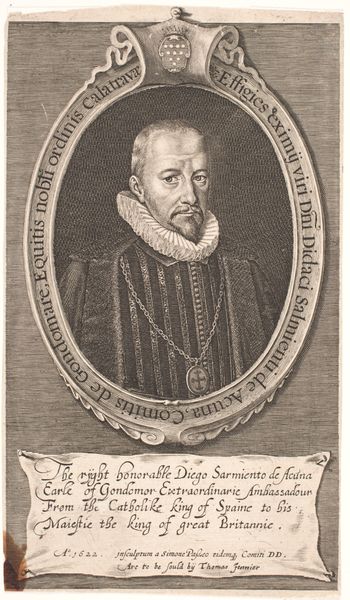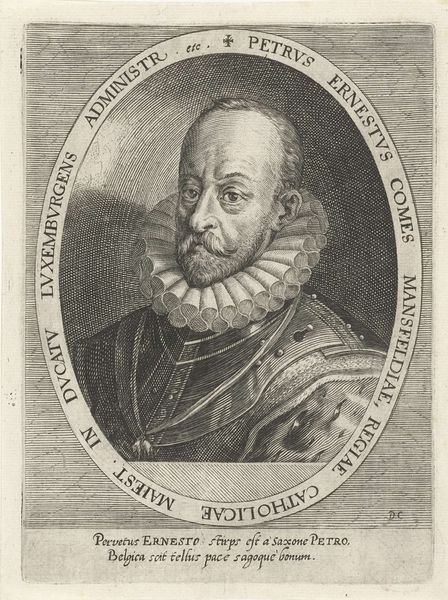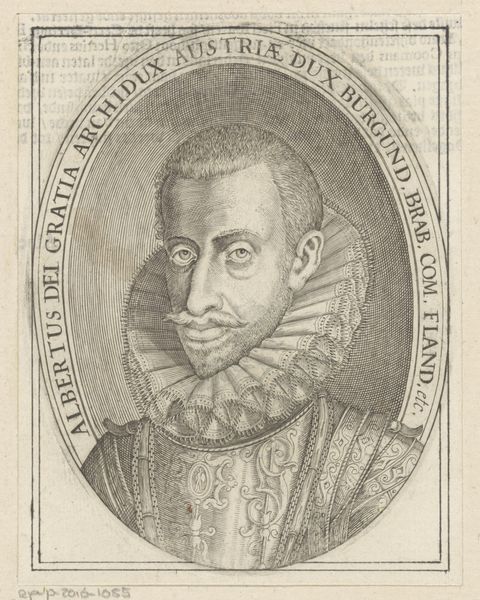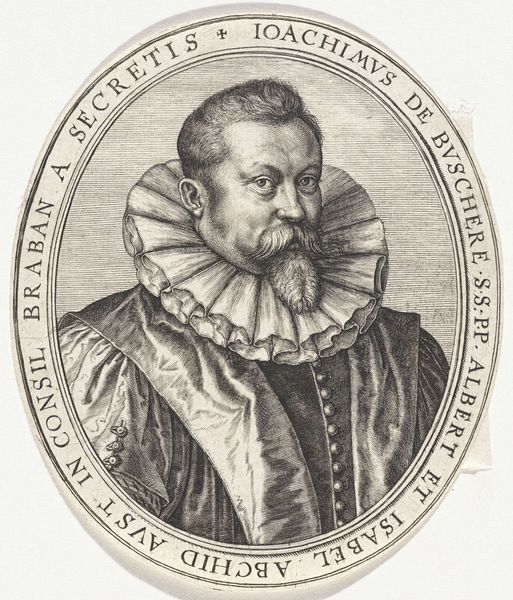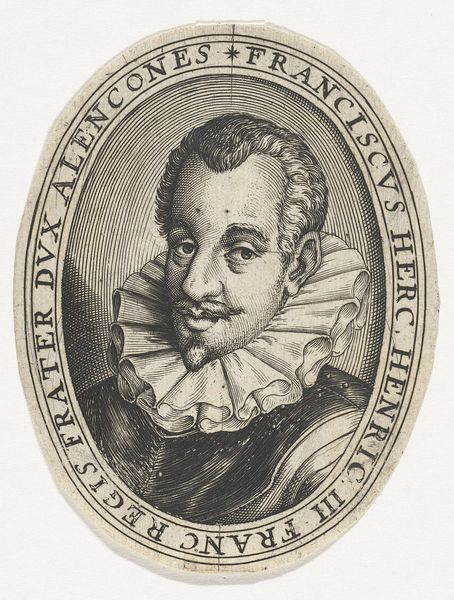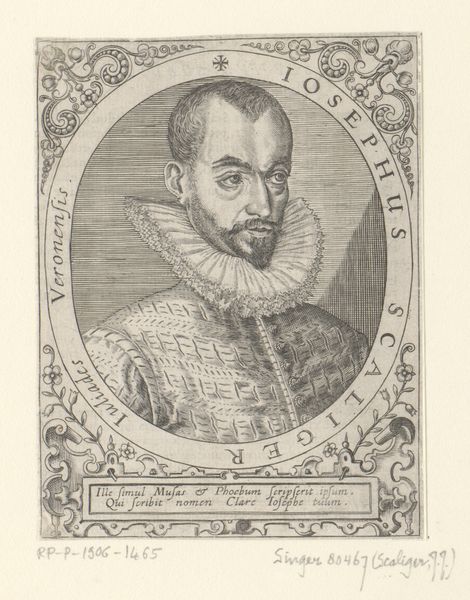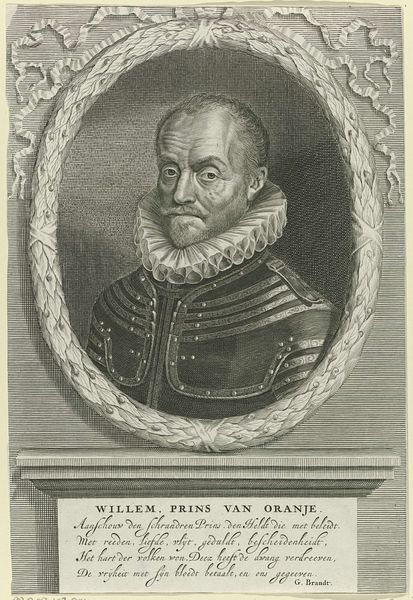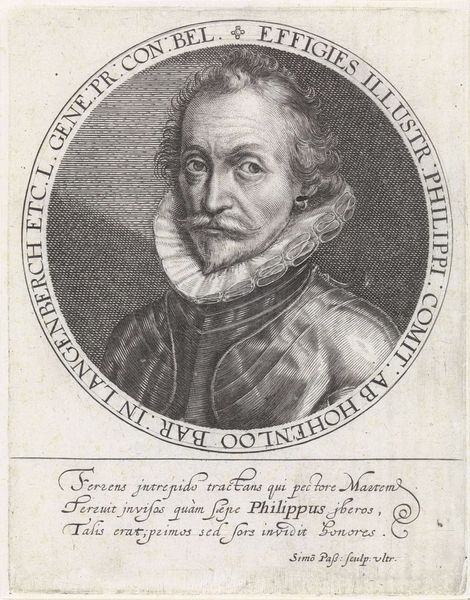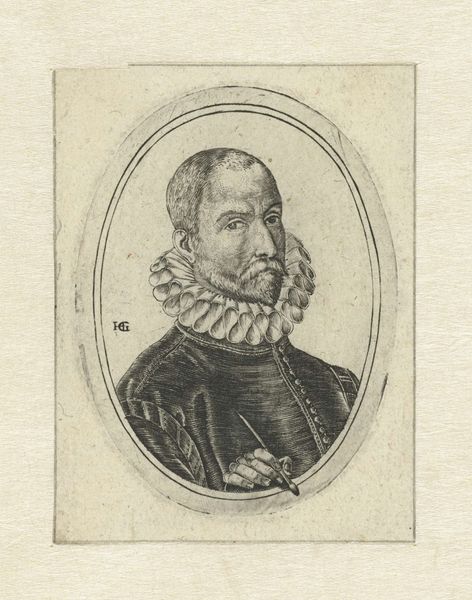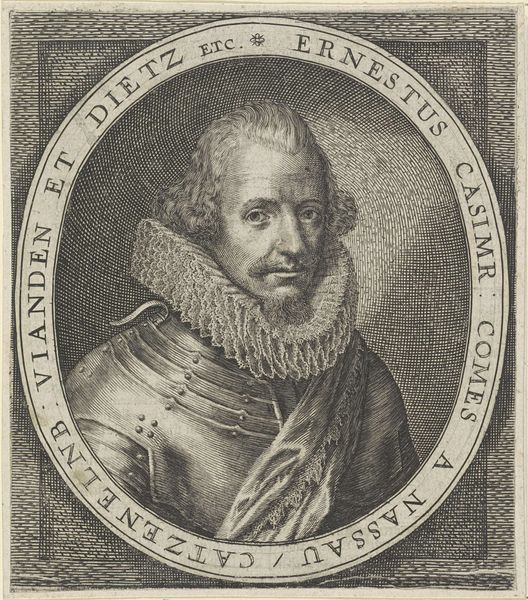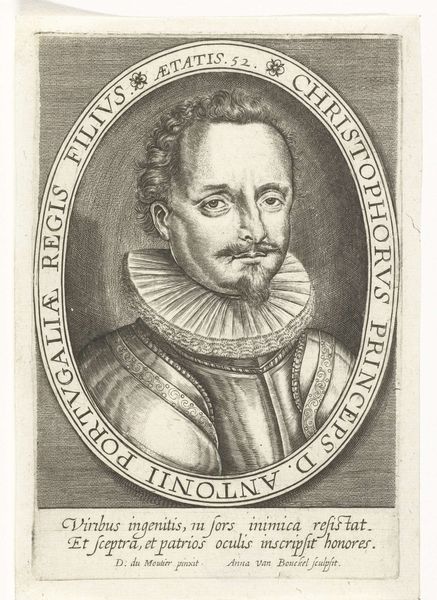
print, engraving
#
portrait
#
aged paper
#
toned paper
#
baroque
# print
#
old engraving style
#
personal sketchbook
#
portrait reference
#
portrait drawing
#
history-painting
#
engraving
Dimensions: height 180 mm, width 145 mm
Copyright: Rijks Museum: Open Domain
Editor: Here we have "Portret van Johann Ernst van Saksen," dating from after 1601, created by Dominicus Custos. It's an engraving. I’m immediately struck by the incredible detail in the ruff and the clothing. What compositional elements stand out to you? Curator: Observe how the composition adheres to the formal constraints typical of Baroque portraiture, yet reveals the limitations of engraving as a medium. The tightly controlled lines define form, yet deny the modulation of tone achieved in painting. Do you see how this tension creates an interesting flattening effect? Editor: I do see it. The lines are so precise, but everything appears somewhat flattened, like a meticulously rendered drawing. Curator: Indeed. Note also the ovoid frame and its effect on the spatial relationships within the composition. The text encircling the subject acts as both decoration and framework, yet also flattens pictorial space, does it not? Editor: It’s almost as if the text and portrait are competing for the viewer's attention. The text frames the Duke, but then its graphic weight threatens to make the portrait less imposing, doesn't it? Curator: Precisely! This push and pull creates a dynamic tension. The materiality of the printmaking process also influences our experience; its inherent replicability distances the subject, transforming an individual into an emblem. How does that awareness of reproducibility alter your perception of the portrait's aura? Editor: I hadn't thought of it that way. It becomes less about the individual and more about the statement being made. The portrait isn't trying to show what makes Johann Ernst unique, but rather places him in a more abstract context within his role as a Duke. Curator: Precisely. Examining the formal and material qualities of the engraving gives us deeper insight into its representational strategies. Editor: I see it now! Thank you for guiding me in reading beyond the surface.
Comments
No comments
Be the first to comment and join the conversation on the ultimate creative platform.
